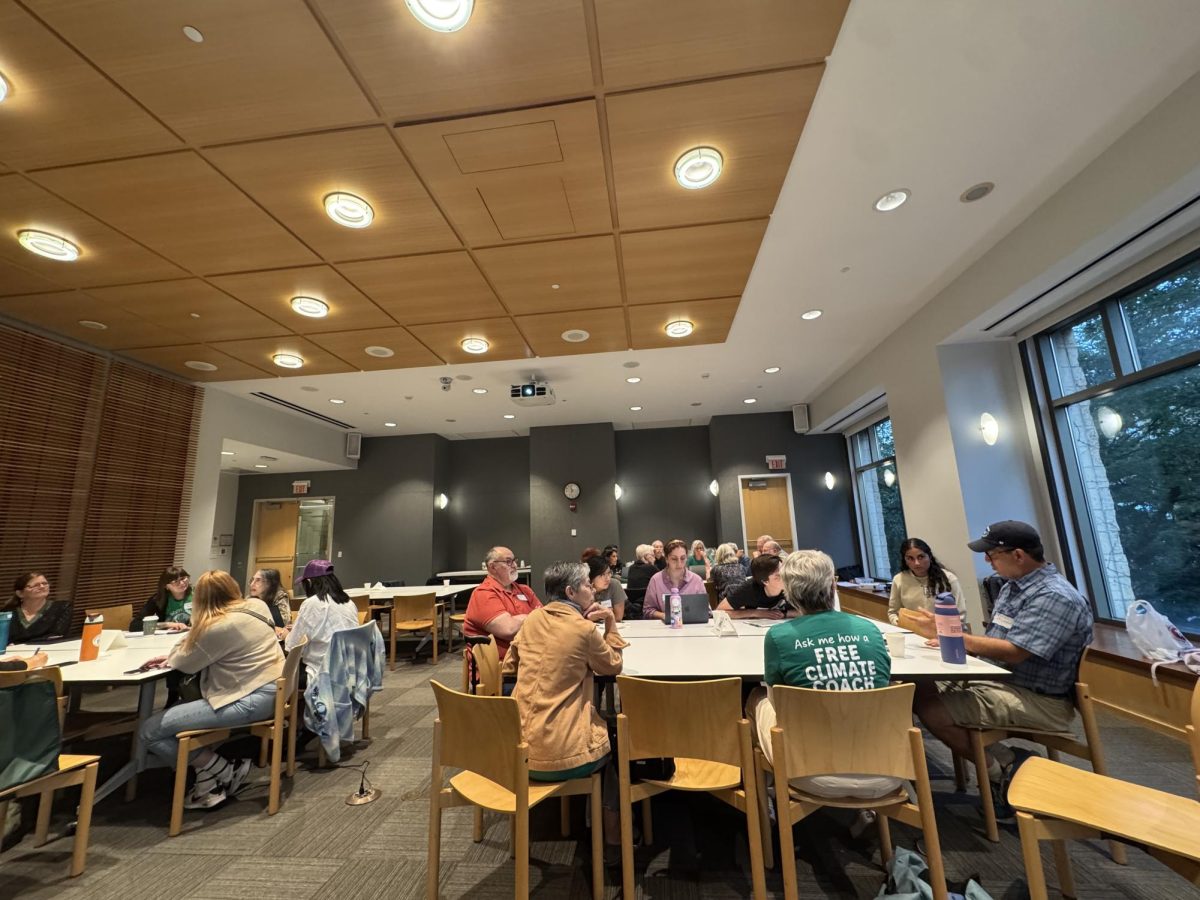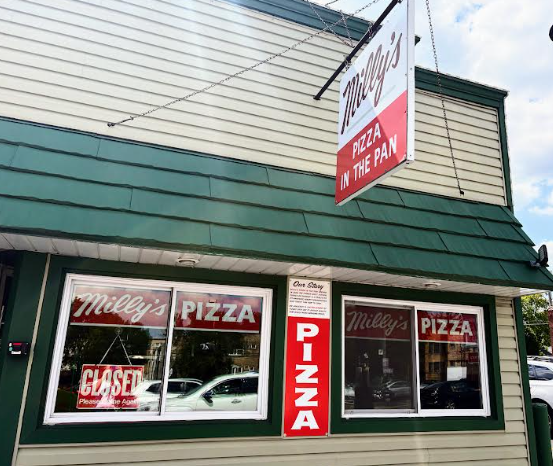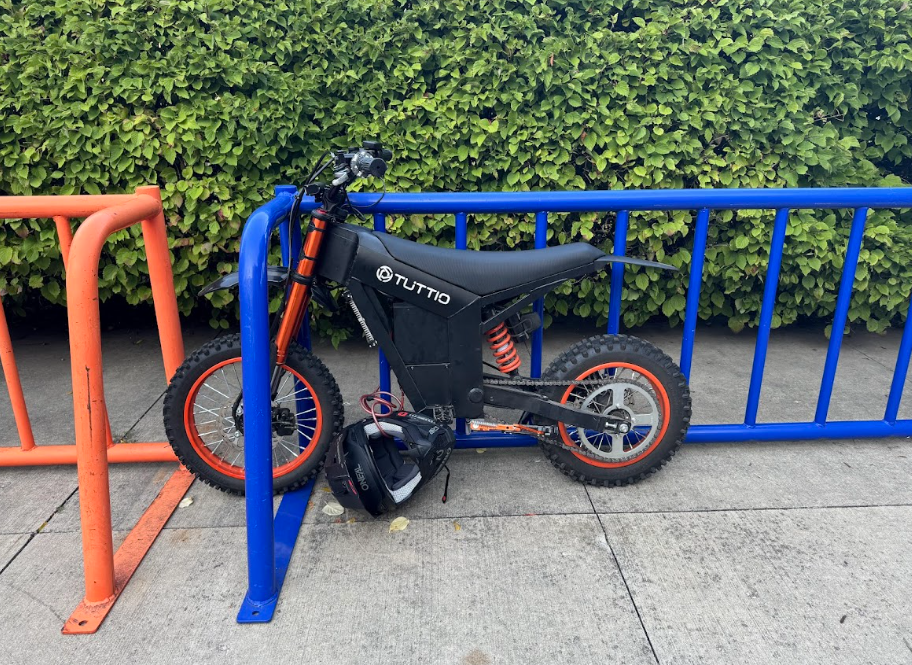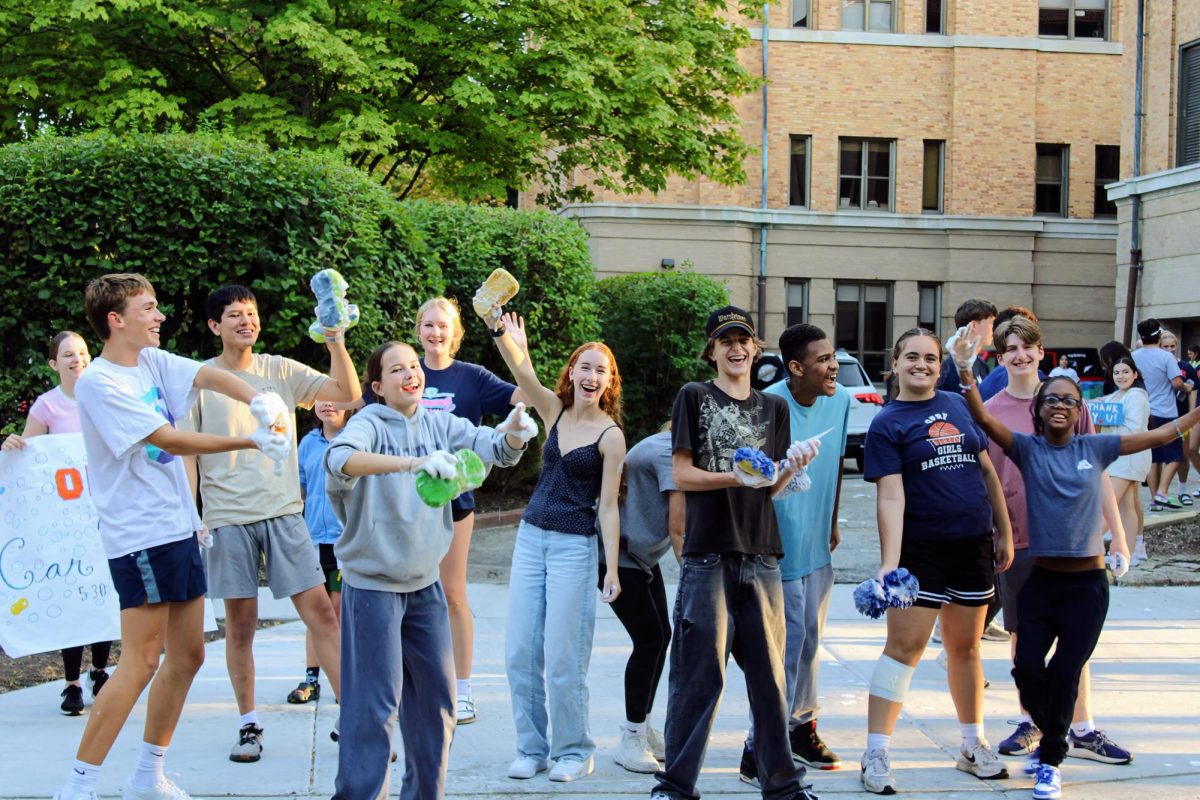A plan is underway to implement geothermal energy in Project 2, the major renovation of the athletic facilities at Oak Park and River Forest High School.
Geothermal energy is a heating, ventilation and air conditioning (HVAC) system that uses the natural thermal properties of the earth to retain water at a certain temperature. When the building needs to be heated, the water travels through pipes that feed into a heat pump, which then pushes hot air into the building. In the summer, the water stays at a cool temperature which will be used to cool the building.
Notably, OPRF’s geothermal plan will significantly reduce carbon emissions produced by the school, saving approximately 442,000 pounds of carbon dioxide annually (see graphic). “OPRF as a district, from the board to the students to the administrators, is one of the most green-conscious districts I have ever encountered,” said Anthony Arbogast, assistant superintendent of business services. “We have very lofty sustainability goals that other districts wouldn’t dare to tackle, and I don’t think we would hit those goals without a system like this in place.”
Manolo Avalos, an OPRF senior who is part of the school’s Sustainability Committee, has been in the loop on this project. “The district has brought updates to the sustainability committee quarterly,” he said. “This is a huge step toward the high school being more sustainable” because “we will offset some of our greenhouse gas emissions.”
OPRF’s Sustainability Policy calls for “reducing greenhouse gas emissions to 45% of 2012 levels by 2030 and 100% by 2050.”
In January, the District 200 Board of Education approved a geothermal plan proposed by Veregy, LLC, a construction and engineering company that specializes in green energy.
The geothermal well–where the pipes will run–will be under the football field, meaning the turf and field will need to be torn up for installation. But Arbogast is confident that “when the process is done, nobody should know that it’s there.”
Construction for Project 2 is scheduled to begin at the end of this school year. The schedule for installing the geothermal plan is still being finalized.
However, the “goal here is to make sure that it doesn’t impact the student experience,” said Arbogast. “We’re going to attempt to put this in in the winter after seasons are done, and then be complete so everyone can still graduate on the field when it’s done.”
Getting a deal
While the project will be expensive, the district will take advantage of significant savings available through rebates from the federal government. In 2022, the Inflation Reduction Act (IRA) was passed, which according to the White House was the “the largest investment in clean energy and climate action ever.” The IRA provides substantial rebates for “clean energy investment,” according to the U.S. Department of the Treasury.
OPRF’s geothermal energy plan qualifies for those savings. Although the total predicted cost is $10.3 million, “there’s a potential that 35% of the project can be rebated and given back to the district,” said Arbogast. “It really times out nicely. It’s kind of the one shot we had to do this.”
The IRA provides rebates of $3.3 million for the geothermal system and $4.1 million for the mechanicals in Project 2, making the total estimated rebate $7.4 million, according to information published for the Jan. 25 Board of Education meeting.
In addition to the cost savings from the rebates, geothermal energy will save the district money in the future because it’s less expensive to run than conventional heating and cooling systems, according to project leaders. “Long term, the geothermal energy system is going to reduce your energy and operation cost significantly compared to a traditional HVAC system,” said Michele James, a senior sales account executive at Veregy. “It’s an ongoing benefit to the district to use a system like this versus a traditional system that a lot of different districts use.”
The Sustainability Plan predicts that geothermal is expected to save the district approximately $6 million over a 30-year cycle.
A live learning lab
While geothermal energy is growing in popularity, “Oak Park is definitely at the forefront in this area of doing this type of project,” said James. Beyond school districts, Veregy is “seeing it across the board in residential areas,” she added.
“The exciting part for us is to help the district reduce their energy operational custom and carbon footprint,” said James, “but then also use this information as a live learning lab for students.”
Gordon Schweitzer, an account executive at Veregy, added, “We’ll take a lot of photos of the construction of the project and wells and certainly keep the student body updated on the progress. I don’t see too many districts that have a major geothermal well field under their football field, so it’s certainly a neat project that a lot of things had to go right for it all to fit together.”
Schweitzer believes that “from a student perspective, it’s pretty cool to be in a school where all this is going on. So we’re excited to be a part of it.”
For Arbogast, the project’s value will extend to future generations. “It’s amazing to think about the fact that we have students here that in 40 years, they could have grandchildren go to Oak Park, and those children will be in a building that is still being heated and cooled by this system,” he said. “ The long term durability of this system and the sustainability efforts that it brings to reduce our carbon emissions in the building are tremendous.”
The Board of Education has consistently valued sustainability, but now they are really “putting money where their mouth is,” said Arbogast. “We have to not just talk the big game, but then achieve it.”







